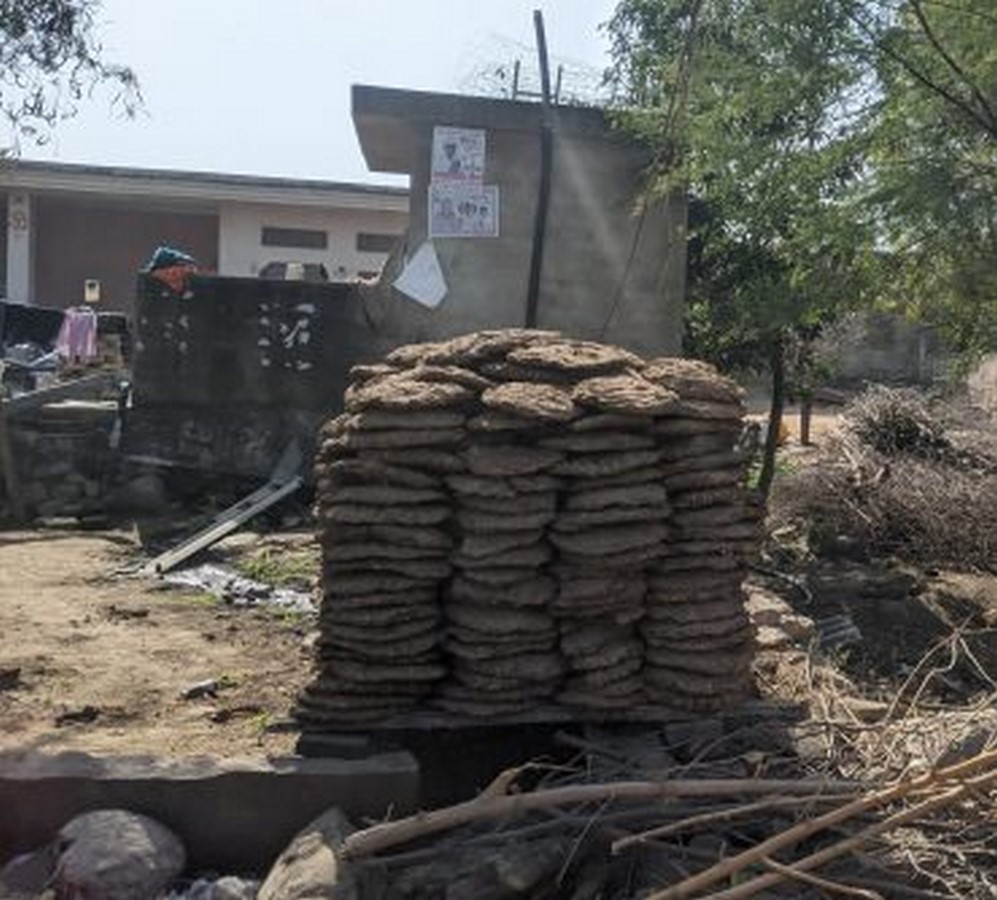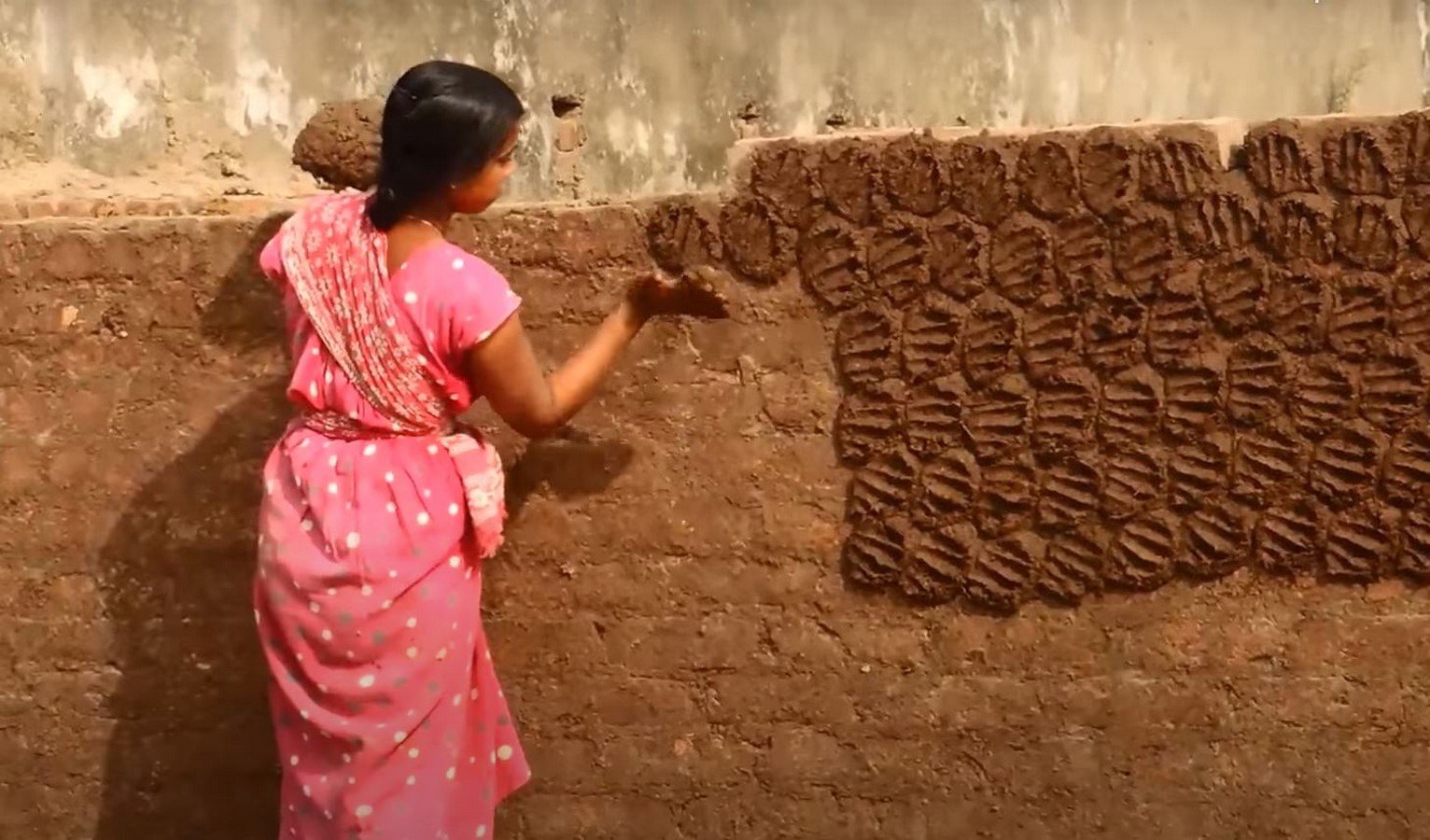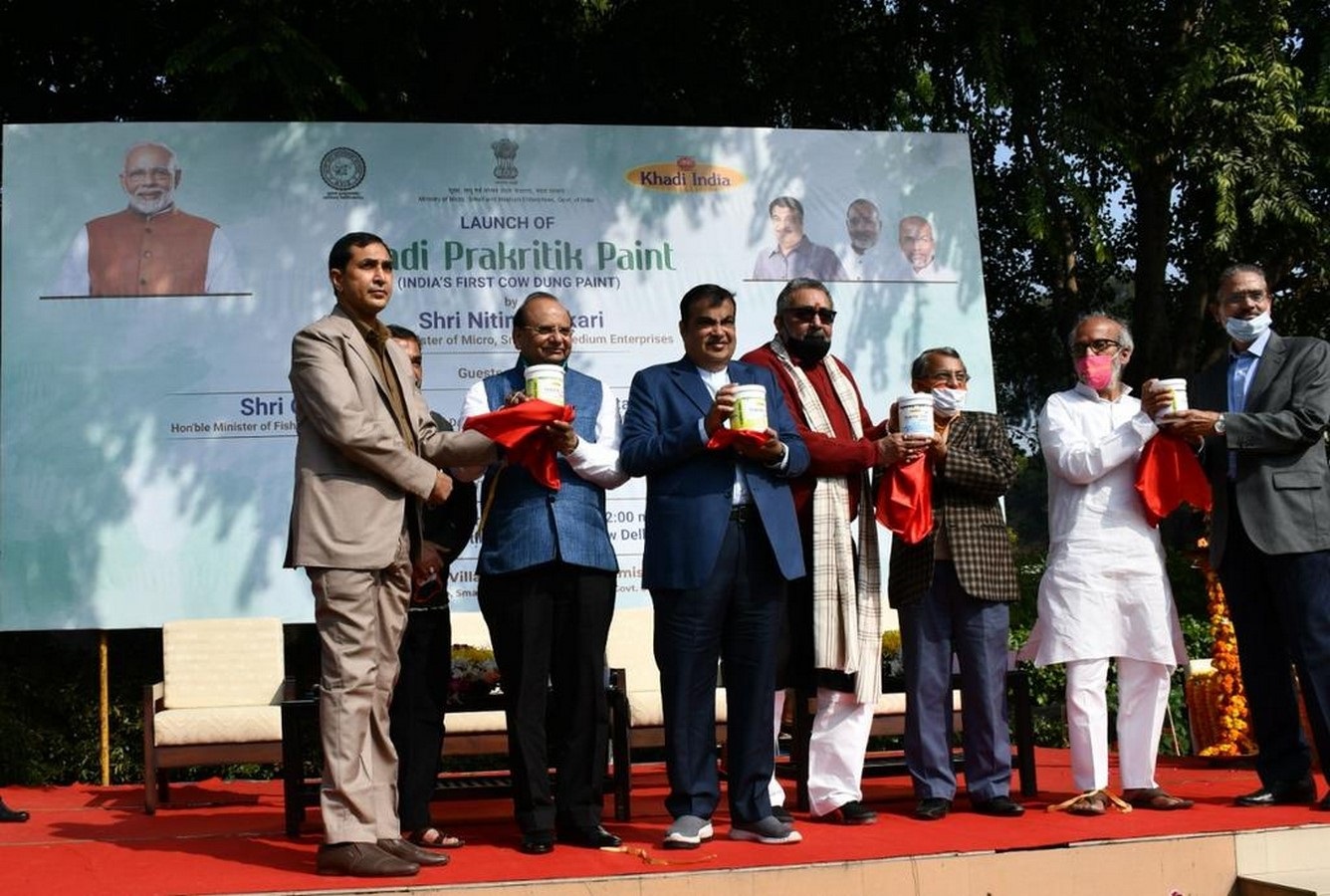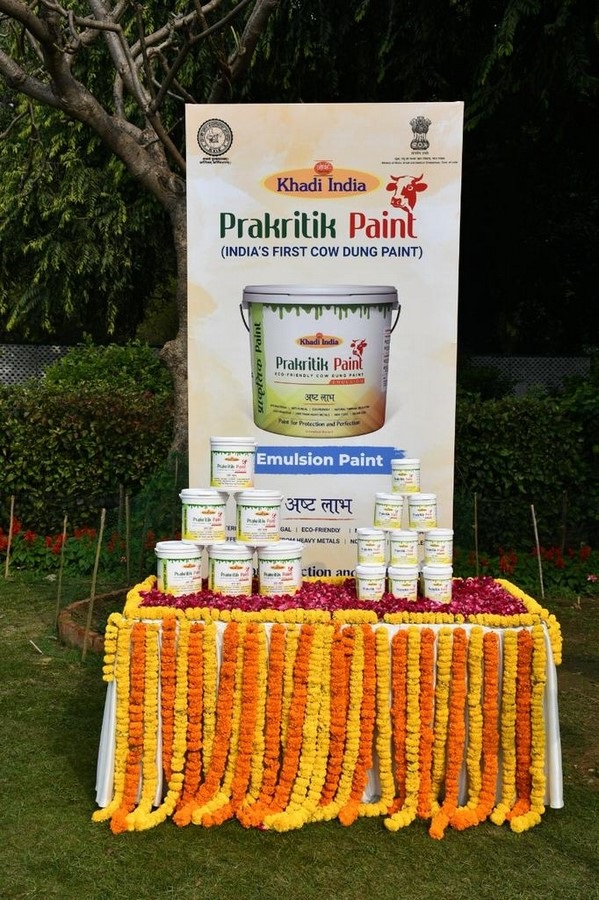In the Indian natural products landscape, Cow dung paint is not the first everyday product to be created using cow waste. On the market there are already incense sticks in cow dung; in 2015 a natural disinfectant from cow urine was developed, the “Gauashish Phenyl” with antimicrobial and antifungal properties.
In October 2019, Gadkari launched cow dung soaps, called Panchgavya Soap, and made by the Khadi and Village Industries Commission. Following this production line in January 2021 India launched its first eco-friendly paint, called “Khadi Prakritik Paint”.
Traditions
Cow dung, even if you have more idea of using it could be disgusting, has a history rooted in Indian culture, not only for the products mentioned in the introduction but for many uses rooted in the history of the nation.
In Indian villages it is tradition, in fact, to use cow dung or flat meatballs made from cow waste for various purposes, and it is a common sight to find heaps of cow dung flat patties near shelters. In fact, before the advent of cooking gas, many Indian houses also used cow dung flat balls as fuel.
In addition, people in the villages collect poop from cows or buffaloes to which they mix hay to form a dough that in the form of flat patties comes and is applied on the walls of dwellings, indoor and external, or on the ground and dried. This practice is fundamental for the properties of cow paste that ensures a thermal balance both in winter and summer and, thanks to its antibacterial properties, keeps bacteria, insects, and mosquitoes at bay.


Khadi Prakritik Paint
It’s a cow dung paint, a first-of-its-kind product, that was launched by Minister of Road Transport and Highways and Micro, Small and Medium Enterprises Nitin Gadkari, and developed by Khadi and Village Industries Commission (KVIC), a statutory body formed to promote, support and establish Khadi & village industries.

Properties and sustainability of Cow dung Paint
This product, cow dung paint, is very important not only because it is a unique product of its kind, but because of its multiple qualities: non-toxic, odorless, natural, and ecological, free of heavy metals such as mercury, lead, chromium, cadmium and arsenic, a natural antifungal and antibacterial properties.
Khadi Prakritik Paint was launched only after receiving certification from the Bureau of Indian Standards (BIS) the country’s national body for giving quality certification of goods, setting limits and requirements regarding the presence of lead and heavy metals in products. Unfortunately, this certification is still a voluntary requirement, not a mandatory one.
However, studies carried out over the years by the Center for Science and Environment and the NGO Toxics Link in Delhi have shown that most of the paints on the market in India contain toxic chemicals, in particular, lead, which can have serious impacts on people’s health.
Khadi Prakritik Paint, a cow dung-based paint, thanks to its economic convenience will play a fundamental role in changing the course of the paint market in India by incentivizing the reduction of the use of chemical-based paints.

Tests and applications of Cow dung Paint
Cow dung paint successfully passed various test parameters. Such as the application of paint, thinning properties, drying time, and finishing, among others. As a result of these tests, it is highlighted that this ecological paint: dries in less than four hours and has a smooth and uniform finish.
In addition, it has been verified that both distemper and emulsion paints, available in white with the possibility of being developed in any color, can be applied on both internal and external walls.

Social Sustainability
Although the price of cow dung paint is significantly lower than that of other paints, the distemper variant is priced at only Rs 120 (USD 1.6) per liter and the emulsion will cost Rs 225 (USD 3) per liter; its production is expected to stimulate local manufacturing industry and create sustainable local employment through technology transfer.
These innovative products and technologies will increase the consumption of cow dung as an eco-friendly material. As the supply of the raw material will mainly come from village farmers who own cows for milk or agriculture, this, in the future, could generate additional revenue for farmers and Gaushalas that could be as much as Rs 30,000 per cow per year. To make it a large-scale initiative, KVIC plans to create 500 production units within the next six months in villages across the country.

















